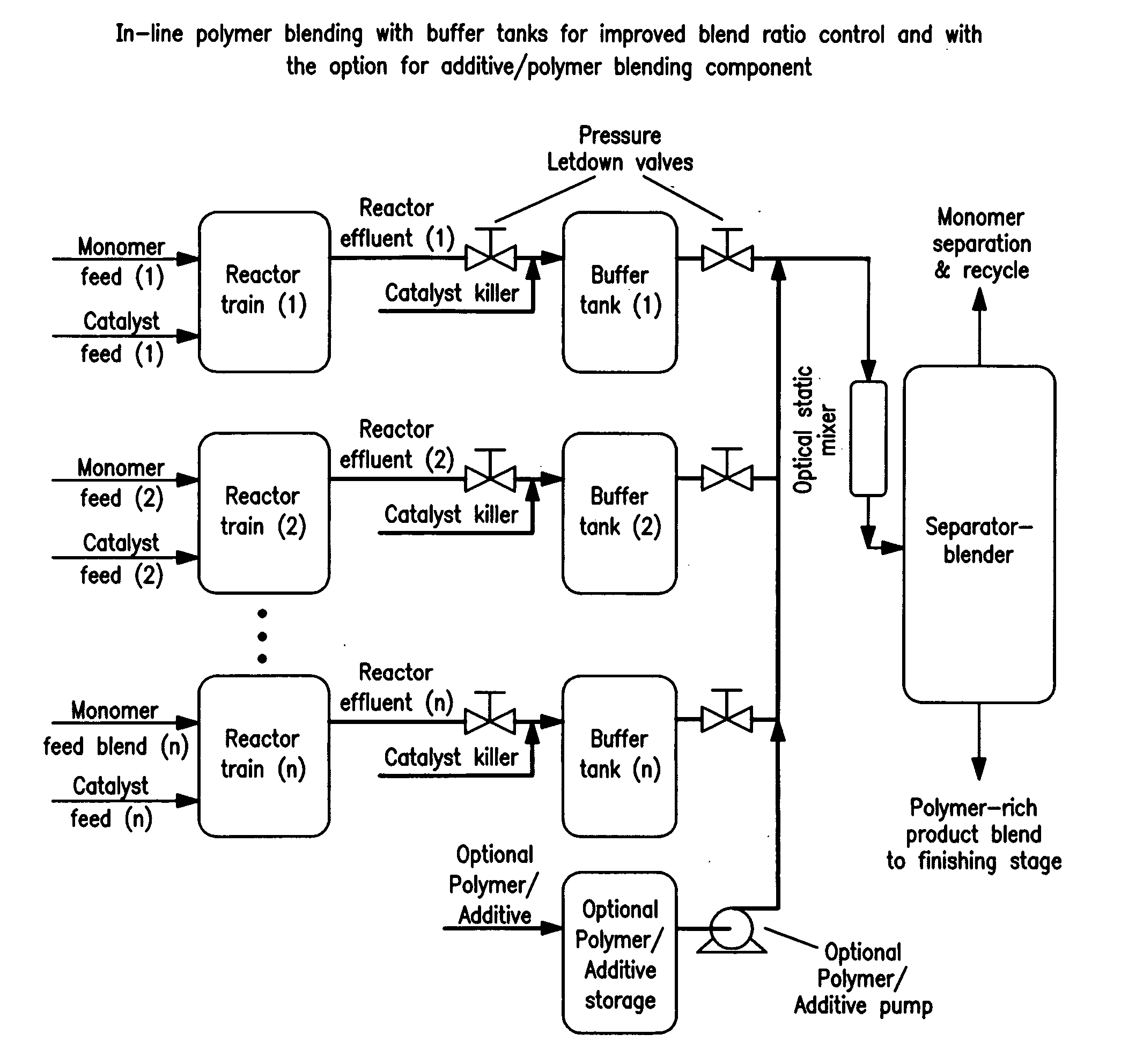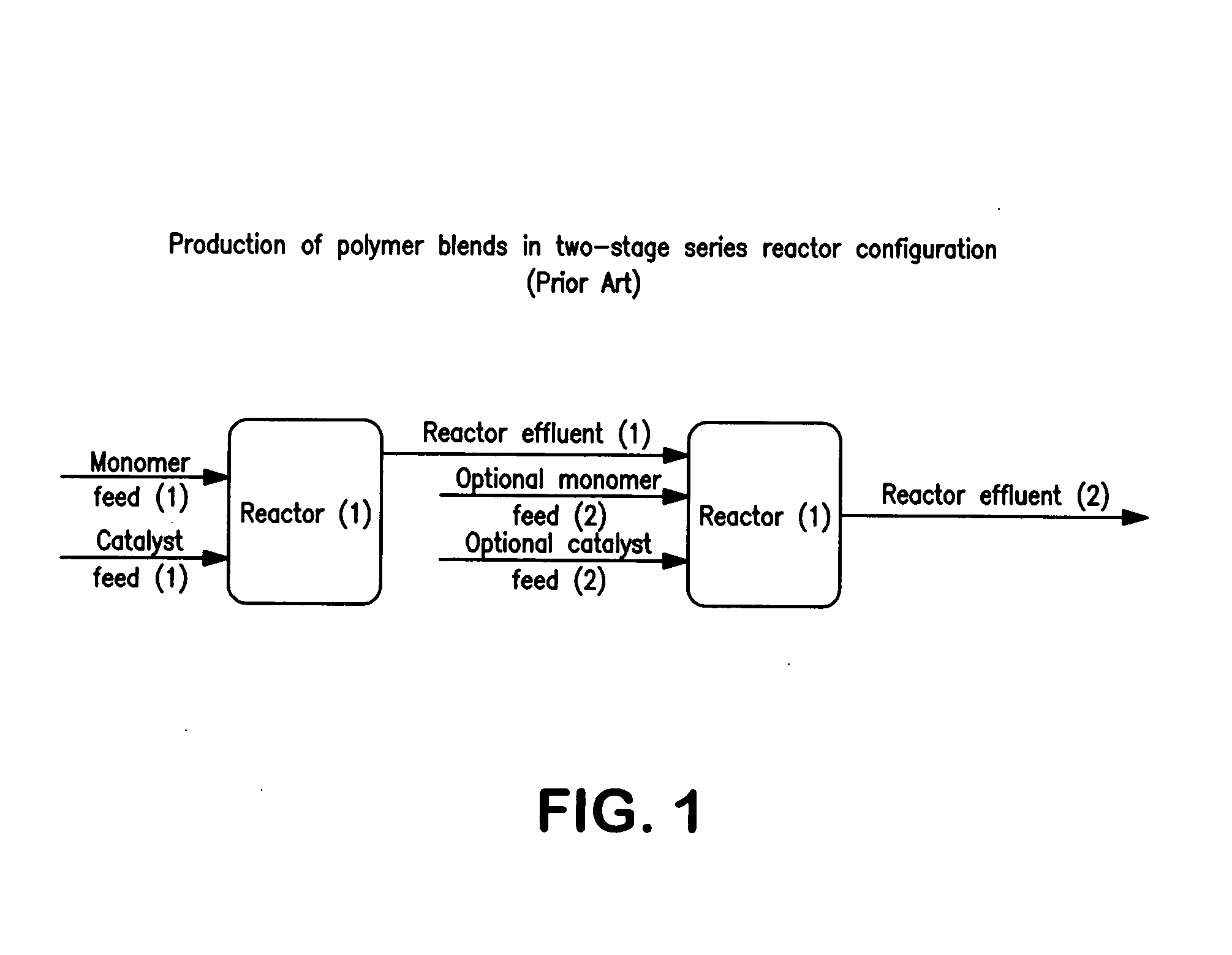Process for fluid phase in-line blending of polymers
a polymer and fluid phase technology, applied in chemical/physical/physical-chemical processes, transportation and packaging, chemical apparatus and processes, etc., can solve the problems of solution blending, difficult and expensive off-line process of polymer blend making, and inability to meet the requirements of blending,
- Summary
- Abstract
- Description
- Claims
- Application Information
AI Technical Summary
Benefits of technology
Problems solved by technology
Method used
Image
Examples
Embodiment Construction
[0072]Disclosed herein are novel in-line processes for blending polymers in polymerization processes in which at least one of the reactor trains operates with a dense homogeneous fluid polymerization system and the polymerization system in at least one of the polymerization reactor trains includes an olefin monomer that has three or more carbon atoms. In one form, the processes include providing two or more reactor trains configured in parallel; contacting olefin monomer(s) with catalyst systems, optional comonomer(s), optional scavenger(s), and optional inert diluent(s) or inert solvent(s), wherein the polymerization system for at least one of the reactor trains configured in parallel is at a temperature above the solid-fluid phase transition temperature, at a pressure no lower than 10 MPa below the cloud point pressure and less than 1500 MPa, particularly between 10 and 300 MPa, advantageously between 20 and 250 MPa, is in its dense fluid state, and is above its critical temperatu...
PUM
| Property | Measurement | Unit |
|---|---|---|
| Pressure | aaaaa | aaaaa |
| Pressure | aaaaa | aaaaa |
| Pressure rise rate | aaaaa | aaaaa |
Abstract
Description
Claims
Application Information
 Login to View More
Login to View More - R&D
- Intellectual Property
- Life Sciences
- Materials
- Tech Scout
- Unparalleled Data Quality
- Higher Quality Content
- 60% Fewer Hallucinations
Browse by: Latest US Patents, China's latest patents, Technical Efficacy Thesaurus, Application Domain, Technology Topic, Popular Technical Reports.
© 2025 PatSnap. All rights reserved.Legal|Privacy policy|Modern Slavery Act Transparency Statement|Sitemap|About US| Contact US: help@patsnap.com



